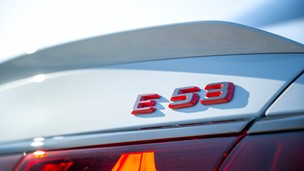Mazda’s compact crossover is a well-equipped and efficient SUV.
Introduction
A crossover from Mazda that aims to topple the premium end of the market? Usually BMW, Audi, Mercedes et al can rest easy when a statement like that appears in the media. That is until you climb into the smart-looking Mazda CX-5.
This is one of the most exciting cars to come out of the Mazda stable since the world's most popular sports car, the MX-5, arrived over 20 years ago. The Mazda CX-5 features neat SUV styling. This means a raised ground height, commanding driving position and a spacious interior. Mazda has made the most of its green technology in the CX-5, rejecting electric technology (for now) in favour of more efficient petrol or diesel engines. This is not a bad idea, as hybrid technology often adds weight and complexity.

Performance
Engines for the Mazda CX-5 include the range-topping 173bhp 2.2-litre turbocharged diesel. This engine is allied with four-wheel drive and delivers a 0-62mph sprint time of 8.8 seconds and a top speed of 129mph. This unit certainly feels powerful and handles motorway driving with aplomb, pulling well from very low revs.
A less powerful version of the same 2.2-litre diesel with 148bhp is also available, which we recommend if you want efficiency – but we will get to that later. The sole petrol option is a 2.0-litre unit producing 163bhp. Both of these feel reasonably brisk as well, making the range-topping diesel feel far less like an essential choice.
The petrol unit uses front-wheel drive only, while the 148bhp diesel is available with both a front and four-wheel drive set-up. A six-speed manual gearbox is standard for the CX-5, but diesel models can be specified with a six-speed automatic ‘box. With that said, the manual box is your best bet as it is incredibly slick, thanks to it taking inspiration from the MX-5’s coveted gearbox.

Ride and Handling
Mazda has always been a brand that focuses on the driving experience. The CX-5 is a crossover so don't expect MX-5-like cornering, but it is surprisingly nimble. The steering is incredibly responsive and the CX-5 devours corners making it an enjoyable drive. Agility is bordering on class-leading and body roll is minimal around corners.
Although the CX-5's setup is oriented towards the sportier end of the market, its suspension is surprisingly supple, swallowing speed bumps and pot holes with ease. Road and wind noise is also minimal.
There are no real complaints with driving the CX-5, and four-wheel drive versions will please those looking for more grip who need to tackle tougher conditions.
The drive impresses: steering is incredibly responsive and the CX-5 devours corners making it an enjoyable drive.
Did you know? The CX-5 was the first production car Mazda launched which incorporates both the manufacturer’s ‘Skyactiv’ driving technology and its latest ‘Kodo’ design language.
Interior And Equipment
The Mazda’s cabin is a pleasant place to sit. It’s comfortable and space is plentiful in the front and back, so four adults and a child in the middle rear seat can fit in with ease. Sit behind the wheel and the instrument panel, switches and dials are all simple and uncluttered, a triumph of ergonomic design.
It probably lacks the flair of, say, a Mercedes GLA-Class in the cabin, but it does not feel like Mazda has scrimped on quality a little.
Even entry level models in the CX-5 come with plenty of kit, featuring cruise control, climate control and air conditioning. Also standard is as an infotainment system with a high quality 5.8-inch colour touch screen. With the flagship Sport trim, Mazda adds the likes of a reversing camera and an upgraded Bose sound system.
The CX-5’s vast boot is capable of swallowing 503 litres of luggage with the seats up, making it one of the more practical entries in the compact SUV segment. Even the likes of the BMW X1 and Audi Q3 have considerably smaller boot sizes. This space can be expanded to 1,620 litres by folding the seats down – which can be done incredibly easy using a lever located near the back-end of the boot.

Cost
The Mazda CX-5 starts from around £22,000, more than the starting price for the Nissan Qashqai, Ford Kuga and Skoda Yeti. Specifications around the top of the CX-5 range can reach almost £30,000. For that sort of money, a mid-range BMW X1 or Audi Q3 are both within reach.
A major attraction of the CX-5, however, are its low running costs. The 2.2-litre diesel emits just 136g/km with four-wheel drive. With front-wheel drive it emits just 119g/km and returns 61.4mpg on the combined fuel cycle. The petrol unit also impresses with CO2 emissions of just 139g/km.
The 148bhp diesel unit combined with a manual gearbox and front-wheel drive gives you the best combination of speed, low emissions and good fuel economy.
The 2.2-litre diesel emits just 136g/km with four-wheel drive.

Our Verdict
BMW, Audi and Mercedes have been churning out premium crossovers for several years now and it takes something special to challenge their market dominance. But the Mazda CX-5 is well-equipped, attractively-designed and exceptionally frugal.
If you can see your way past badge snobbery, it is a viable alternative to all three German car makers. The BMW X1 and Audi Q3 may be highly accomplished cars but the Mazda CX-5 can be mentioned in the same breath - and that's some achievement.
The one real downside is the cost of all the CX-5’s on-board technology. Having a higher price range than crossover models like the popular Nissan Qashqai and Skoda Yeti, is a risk.






